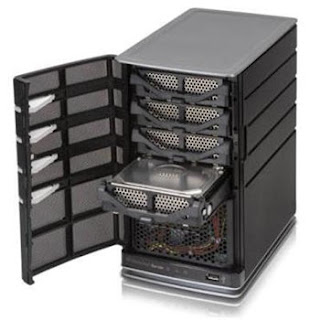Server side factors in search engine optimization
Tuesday, October 02, 2007
One of the most important factors that always matters in Search engine optimization is server. Generally people focus on their Title, Meta, Heading tags, content optimization, code optimization etc.

In all the above cases the server should response proper code.
If-Modified-Since HTTP header: It means requested page hasn't been modified since the last request. Server should configured to return this response when a page hasn't changed since the last time requestor asked for it. It helps you to save your bandwidth and overhead because your server can tell to search engine spiders that a page hasn't changed.
301 Permanent Redirection: Use 301 Permanent redirection when you are moving your webpage or domain permanent to some other locations. It indicates search engine spiders that page is moved permanently to the new location. Use Server side redirection whenever you move your domain or webpage to new location.
302 Temporary Redirection: This redirection is similar to 301, but it indicates Search engine spiders to crawl the current page. It automatically forward requestor to the new location.
200 Status Code: This means server processed request successfully. For any file you are getting this response code means, the file is successfully accessible. But make sure your 404 (Not Found) pages should not return 200 status code OK.
404 (Not Found): Server is unable to process this request. In this case file is not present on the server.
These are the main HTTP status code that search engine optimizers should consider. Apart from this these are the list of HTTP Status Code:
200: request completed (OK)
201: object created, reason = new URI
202: async completion (TBS)
203: partial completion
204: no info to return
205: request completed, but clear form
206: partial GET furfilled
300: server couldn't decide what to return
301: object permanently moved
302: object temporarily moved
303: redirection w/ new access method
304: if-modified-since was not modified
305: redirection to proxy, location header specifies proxy to use
307: HTTP/1.1: keep same verb
400: invalid syntax
401: access denied
402: payment required
403: request forbidden
404: object not found
405: method is not allowed
406: no response acceptable to client found
407: proxy authentication required
408: server timed out waiting for request
409: user should resubmit with more info
410: the resource is no longer available
411: the server refused to accept request w/o a length
412: precondition given in request failed
413: request entity was too large
414: request URI too long
415: unsupported media type
500: internal server error
501: required not supported
502: error response received from gateway
503: temporarily overloaded
504: timed out waiting for gateway
505: HTTP version not supported
To check server headers there are so many online tools are available, you can go through one or two and verify your status code. Just click here to find tools in Google. Check Server Headers

Some of the most important server side factors that affect SEO are:
- If-Modified-Since HTTP header (304-Not modified)
- 301 Permanent Redirection
- 302 Temporary Redirection
- 200 Status OK
- 404 Not Found
In all the above cases the server should response proper code.
If-Modified-Since HTTP header: It means requested page hasn't been modified since the last request. Server should configured to return this response when a page hasn't changed since the last time requestor asked for it. It helps you to save your bandwidth and overhead because your server can tell to search engine spiders that a page hasn't changed.
301 Permanent Redirection: Use 301 Permanent redirection when you are moving your webpage or domain permanent to some other locations. It indicates search engine spiders that page is moved permanently to the new location. Use Server side redirection whenever you move your domain or webpage to new location.
302 Temporary Redirection: This redirection is similar to 301, but it indicates Search engine spiders to crawl the current page. It automatically forward requestor to the new location.
200 Status Code: This means server processed request successfully. For any file you are getting this response code means, the file is successfully accessible. But make sure your 404 (Not Found) pages should not return 200 status code OK.
404 (Not Found): Server is unable to process this request. In this case file is not present on the server.
These are the main HTTP status code that search engine optimizers should consider. Apart from this these are the list of HTTP Status Code:
200: request completed (OK)
201: object created, reason = new URI
202: async completion (TBS)
203: partial completion
204: no info to return
205: request completed, but clear form
206: partial GET furfilled
300: server couldn't decide what to return
301: object permanently moved
302: object temporarily moved
303: redirection w/ new access method
304: if-modified-since was not modified
305: redirection to proxy, location header specifies proxy to use
307: HTTP/1.1: keep same verb
400: invalid syntax
401: access denied
402: payment required
403: request forbidden
404: object not found
405: method is not allowed
406: no response acceptable to client found
407: proxy authentication required
408: server timed out waiting for request
409: user should resubmit with more info
410: the resource is no longer available
411: the server refused to accept request w/o a length
412: precondition given in request failed
413: request entity was too large
414: request URI too long
415: unsupported media type
500: internal server error
501: required not supported
502: error response received from gateway
503: temporarily overloaded
504: timed out waiting for gateway
505: HTTP version not supported
To check server headers there are so many online tools are available, you can go through one or two and verify your status code. Just click here to find tools in Google. Check Server Headers

Post a Comment